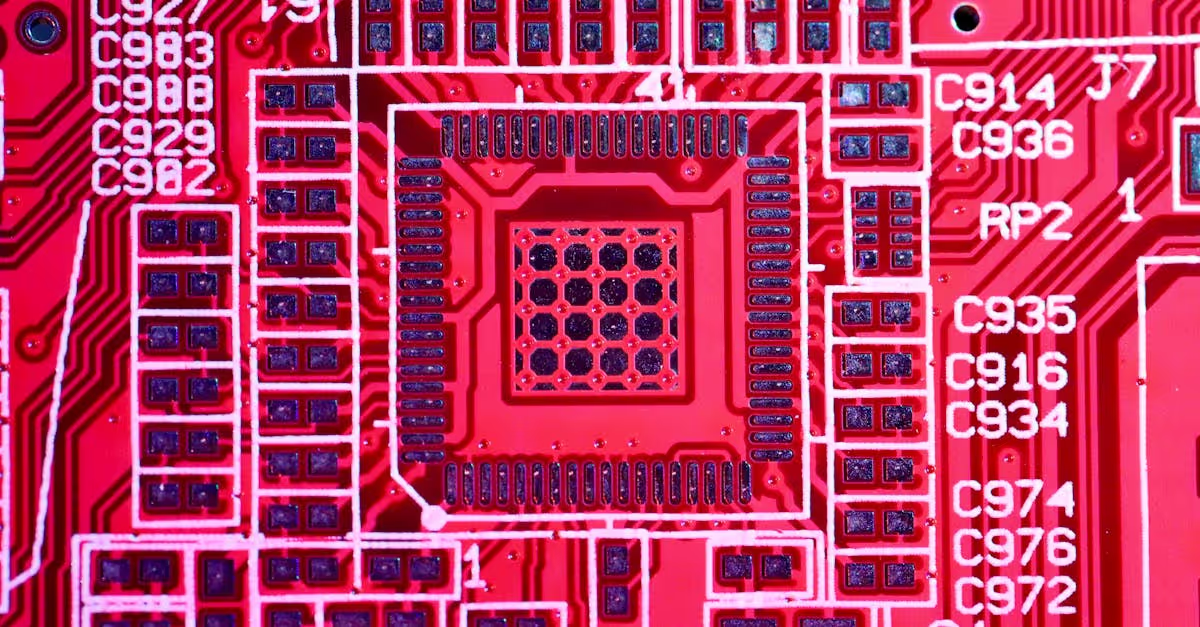Key Takeaways
- Understanding pool renovation costs is essential for effective planning and budgeting, with simple resurfacing ranging from $1,500 to $5,000, while complete overhauls can reach $50,000.
- Various factors such as location, pool size, material choice, and labor costs significantly influence renovation expenses, making it vital to factor these into project estimates.
- Essential upgrades, like resurfacing or plumbing repairs, are typically budget-friendly compared to optional enhancements, which can substantially increase costs.
- Different types of renovations—such as resurfacing, decking, and equipment upgrades—offer various benefits and price points, allowing homeowners to make informed decisions based on their budget and needs.
- Hidden costs, including permits and unexpected repairs, should be accounted for, ideally by setting aside an additional 10-20% of the budget to cover these unanticipated expenses.
- Exploring financing options, such as loans, payment plans, and grants, can help homeowners manage the financial aspects of pool renovations effectively.
When it comes to pool renovations, understanding the costs involved can make a world of difference in our planning and budgeting. Did you know that a simple resurfacing can range from $1,500 to $5,000, while a complete overhaul might set us back anywhere from $10,000 to $50,000? With so many options and price points, it’s essential to know what to expect before diving in.
Overview of Pool Renovation Costs
Pool renovation costs vary significantly based on project type and scope. Understanding these expenses is crucial for effective planning and budgeting.
Factors Influencing Renovation Costs
Various factors impact the overall cost of pool renovations. Location plays a key role; urban areas generally experience higher labor and material costs. Pool size also matters. Larger pools require more materials and labor, increasing total expenses.
Material choice influences pricing. Premium finishes, such as natural stone, can elevate costs significantly. Conversely, basic materials offer more budget-friendly options. Labor costs can vary based on contractor expertise and market demand. Be prepared for fluctuations based on the season and regional trends.
Permits may be necessary for certain projects, adding to overall expenses. Always account for hidden costs, like repairs uncovered during the renovation.
Project Scope and Budget Considerations
Defining project scope and budget helps streamline the renovation process. Determine essential upgrades versus optional enhancements. Essential upgrades might include resurfacing or repairing plumbing, typically costing between $1,500 and $5,000. Optional improvements, like adding water features, can push the budget higher, from $10,000 to $50,000 or more.
We can also consider financing options. Some homeowners opt for loans or payment plans to manage costs effectively. Always leave room for unexpected expenses, as renovations often reveal hidden issues that necessitate additional funds.
Investing time in planning and researching contractors guarantees a smoother experience. An organized approach aids in navigating challenges and maximizing our renovation investment.
Types of Pool Renovation Projects
Various pool renovation projects can cater to our needs and budget. Each option offers different benefits and costs, making it vital to understand what we can choose from.
Resurfacing Options
Resurfacing a pool provides a fresh look and can fix minor damages. We can choose from materials like plaster, pebble, or fiberglass. Plaster resurfacing costs between $1,500 and $5,000, while pebble options can range from $3,000 to $7,000. Fiberglass options often start at $4,000. Choosing the right surface can enhance our pool's appearance and longevity. Have we considered the aesthetic impact of our selections?
Decking and Coping Improvements
Decking and coping upgrades improve our pool's safety and style. Options range from concrete, wood, and stone to pavers. Concrete might cost between $3,000 and $5,000, while higher-end materials, like natural stone, can exceed $10,000. Transforming our deck can create a comfortable area for lounging, hosting barbecue parties, or even practicing our cannonballs. So, what style best fits our outdoor space?
Equipment Upgrades
Upgrading pool equipment enhances efficiency and enjoyment. We may consider energy-efficient pumps, heaters, or automated cleaning systems. A new pump can cost around $600 to $1,200, while heaters might range from $1,500 to $3,000. Implementing automated systems can reduce maintenance time, allowing us to spend more time enjoying the pool. Have we ever thought about how much simpler this can make our summer?
By understanding these renovation types, we can make informed choices that fit our budget and lifestyle needs.
Cost Breakdown for Each Project
Understanding the costs associated with various pool renovation projects helps us make informed decisions. Below, we outline the financial implications of common renovation tasks.
Average Price Ranges
Resurfacing a pool offers several options, and pricing varies widely. For plaster finishes, we're looking at costs from $1,500 to $3,000. Pebble finishes can range from $3,000 to $5,000, while fiberglass options may exceed $4,000, especially if opting for high-end materials. Important choices like decking and coping upgrades bring additional costs. Concrete can set us back $3,000 to $5,000, but if we fancy natural stone, expenses can jump to $10,000 or more. Equipment upgrades equally influence our budget, with energy-efficient pumps and heaters priced between $600 and $3,000, depending on specifications. By grasping these averages, we better navigate our pool renovation journey.
| Project Type | Price Range |
|---|---|
| Pool Resurfacing | $1,500 - $5,000 |
| Decking (Concrete) | $3,000 - $5,000 |
| Decking (Natural Stone) | $10,000+ |
| Equipment Upgrades | $600 - $3,000 |
Hidden Costs to Consider
While we plan for the visible costs, unexpected expenses often lurk. Permits can sneak up on us. Depending on local regulations, the fees could add hundreds to our costs. Additionally, we may face surprises like structural repairs uncovered during renovation. It’s wise to allocate an extra 10-20% of our budget for these hidden costs; it might save us from financial headaches later. Other factors, such as labor rates and location, also play a role. Urban areas typically have higher labor costs. With careful planning and budgeting, we address these hidden expenses head-on, allowing for a smoother renovation process.
Remember, tackling these costs head-on is about more than just numbers. It’s about transforming our outdoor space into a dream environment for relaxation and entertainment! What renovations are you looking to tackle?
Financing Options for Pool Renovation
When considering pool renovations, various financing options can support our projects. Understanding these options helps manage costs effectively.
Loans and Payment Plans
Loans and payment plans offer flexible financial solutions for pool renovation projects. Personal loans typically provide quick access to cash, allowing us to cover up-front costs. Interest rates and terms can vary based on credit scores and lenders. Another option involves home equity lines of credit (HELOC), where we tap into our home’s equity. HELOCs can have lower interest rates than personal loans, making them appealing.
Payment plans from contractors spread costs over time, enabling easier budget management. These plans may include no-interest financing for a set period, helping us save on interest fees. Before committing, we should compare rates and terms to find the best fit for our financial situation.
Grants and Assistance Programs
Grants and assistance programs can help alleviate some renovation costs. Certain organizations offer financial support for homeowners looking to upgrade their pools. For example, energy efficiency grants may be available for installing energy-efficient pool equipment. Programs can also provide funds for safety upgrades, such as installing covers or alarms.
Local community programs might exist, promoting safe and sustainable swimming environments. We can research these options in our area to leverage available funding. Connecting with local agencies enables us to access valuable resources. By tapping into these programs, we can enhance our pool while easing financial burdens.
Conclusion
Understanding the costs associated with pool renovations empowers us to make informed decisions. By carefully considering the scope of our projects and budgeting accordingly, we can avoid unexpected financial surprises.
Exploring various financing options can also ease the burden of upfront costs. With thorough planning and research, we can transform our pools into beautiful and functional spaces that enhance our outdoor living experience.
Investing in our pools not only adds value to our homes but also creates a personal oasis for relaxation and enjoyment. Let’s take the time to plan wisely and enjoy the process of revitalizing our backyard retreats.
Frequently Asked Questions
What is the average cost for pool renovations?
The average cost for pool renovations can vary widely. Simple resurfacing may range from $1,500 to $5,000, while a complete renovation typically costs between $10,000 and $50,000, depending on the extent of the project and materials used.
What factors influence pool renovation costs?
Several factors influence the costs of pool renovations, including location, pool size, material choices, and labor expenses. Urban areas usually have higher labor costs, and larger pools require more resources regardless of the project.
What are the different types of pool renovations?
Common types of pool renovations include resurfacing, decking and coping improvements, and equipment upgrades. Each type offers various options and price ranges, allowing homeowners to tailor their renovation to their specific needs and budget.
How can I prepare for hidden costs in pool renovations?
To prepare for hidden costs in pool renovations, it's advised to allocate an extra 10-20% of your budget for unexpected expenses, such as permits and repairs. Proper planning can help manage these potential financial surprises.
Are there financing options available for pool renovations?
Yes, there are multiple financing options available for pool renovations. Homeowners can consider personal loans, home equity lines of credit (HELOC), contractor payment plans, and possibly grants for energy-efficient upgrades to manage costs effectively.
How do materials affect pool renovation pricing?
Materials significantly affect pricing in pool renovations. Premium options like natural stone increase costs, while more basic materials such as plaster or concrete are budget-friendly. Choosing the right materials helps align aesthetic preferences with budget constraints.






